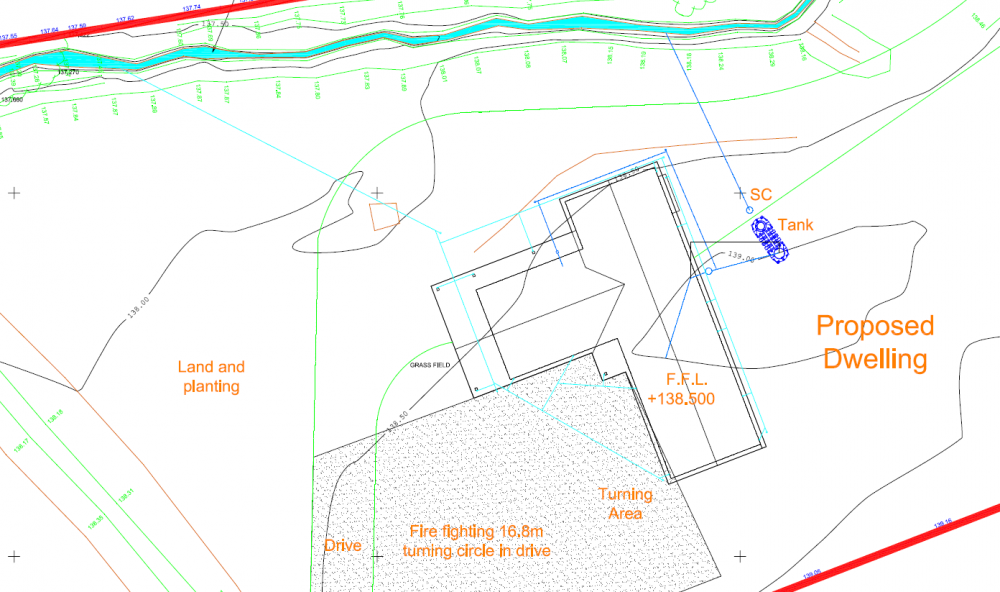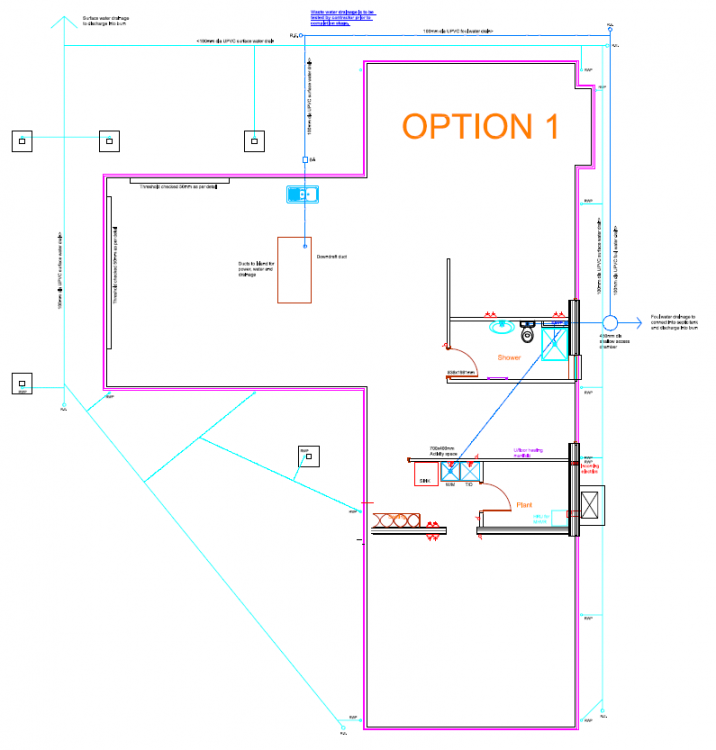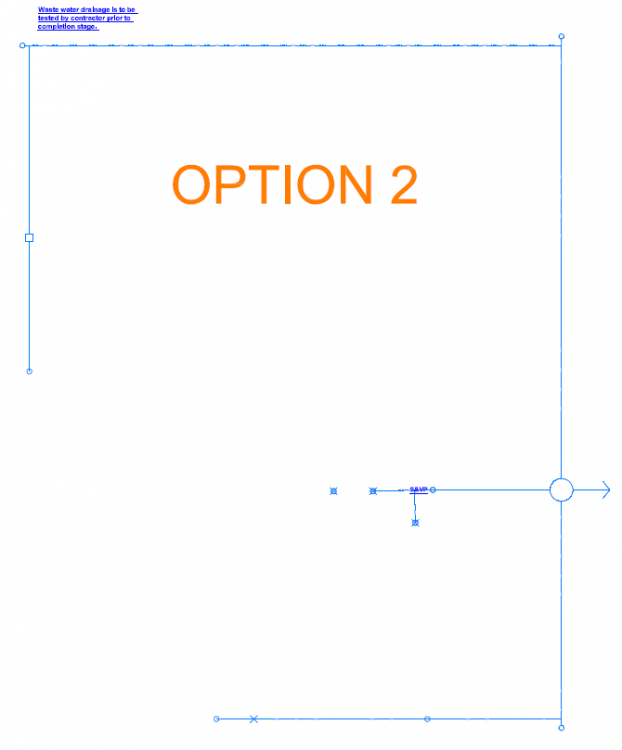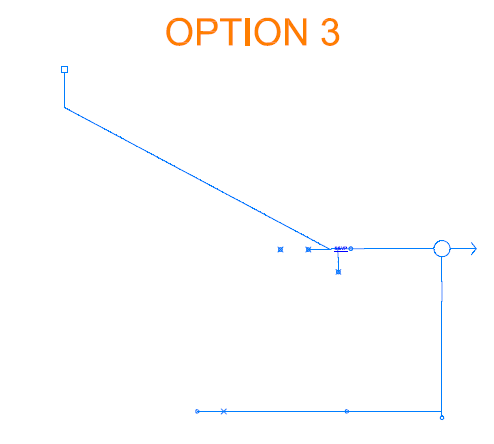Search the Community
Showing results for tags 'foul'.
-
Due to undertake the foundation shortly and the drainage design needs figured out so I can finalise the drawings and then no last minute decisions with the groundworkers or hold ups. I have an insulated foundation and hence drainage need to go under the slab where required, I am trying to minimise this but have a few options currently I wanted some input on to ensure I avoid problems that other may have encountered, it's a large open plot with fairly low invert levels due to a burn which I'll discharge into. If i need to I will use a pumped tank to remove the worry of not having good enough falls. I have attached a section of the site plan showing house and foul and surface water discharge for reference. I have a number of drains on the ground floor: 1) Kitchen sink(plus optional drain underneath island for future changes if we wanted to put a sink there). 2) Gully trap outside kitchen window 3) Downstairs shower room including toilet, basin and shower. 4) Soil vent pipe which is located in a w)all within the downstairs shower room 5) Utility room sink drain (does WM too) 6) Plant room drain - covers safety reliefs, MVHR condensate etc. my question is what layout works seems to work best, and how best to tie some of these together. I.e. In the downstairs bathroom, how do I tie the toilet, basin, shower and soil vent pipe together below the floor do I drop down a 110mm for all? or try hide them in a wall, then tie all to SVP or what seems best? I've shown my drgs below, with an overall view of house an positions, then a detailed view of the respective drainage run for each option. Foul runs are in dark blue Option 1: Architect suggested layout, no plant room drain. Option 2 - My first layout, keeps the runs straight and gets them out from under the slab. Punches straight out from utility picking up plant room and then straight runs outside into an IC to collect everything then flow to treatment plant. Good straight runs and allows Rodding eyes to access everywhere. Otion 3: My second option - removes outside run around hosue and ties it back under the slab from kithchen to downstairs wc. Short run, but a join underneath slab and difficult to add rodding eye at kitchen end. Option 2 for me seems to make the most sense as it is straight easy runs and tied where possible outside the slab, I just need to check invert levels. Does anyone have any input that would help? I've added the full pdf with all options of anyone is really really bored... Drainage options Model update.pdf
-
Hi Guys, Im currently working on the below ground drainage design of a large project which has numerous internal svps, s/s and rwps. All these stacks need picking up below slab level with drains and I need clarification on whats the most practical and economical method. I was hoping that i could connect the stacks directly to the main drainage run without a considerable amount of inspection chambers. (option 1) From my understanding of the building regs a foul stack must connect to an inspection and not connect at a junction (option 2) Is this correct even if the main run has a manhole up and downstream of the junction ? Also, does the above apply to surface water (Rainwater pipes) ? I have attached a simple schematic sketch of the foul to give you an idea of what im blabbering on about. If you know of any technical guidance or publications that would assist me, that would be great too. thanks in advance
- 4 replies
-
- foul
- surface water
-
(and 1 more)
Tagged with:







